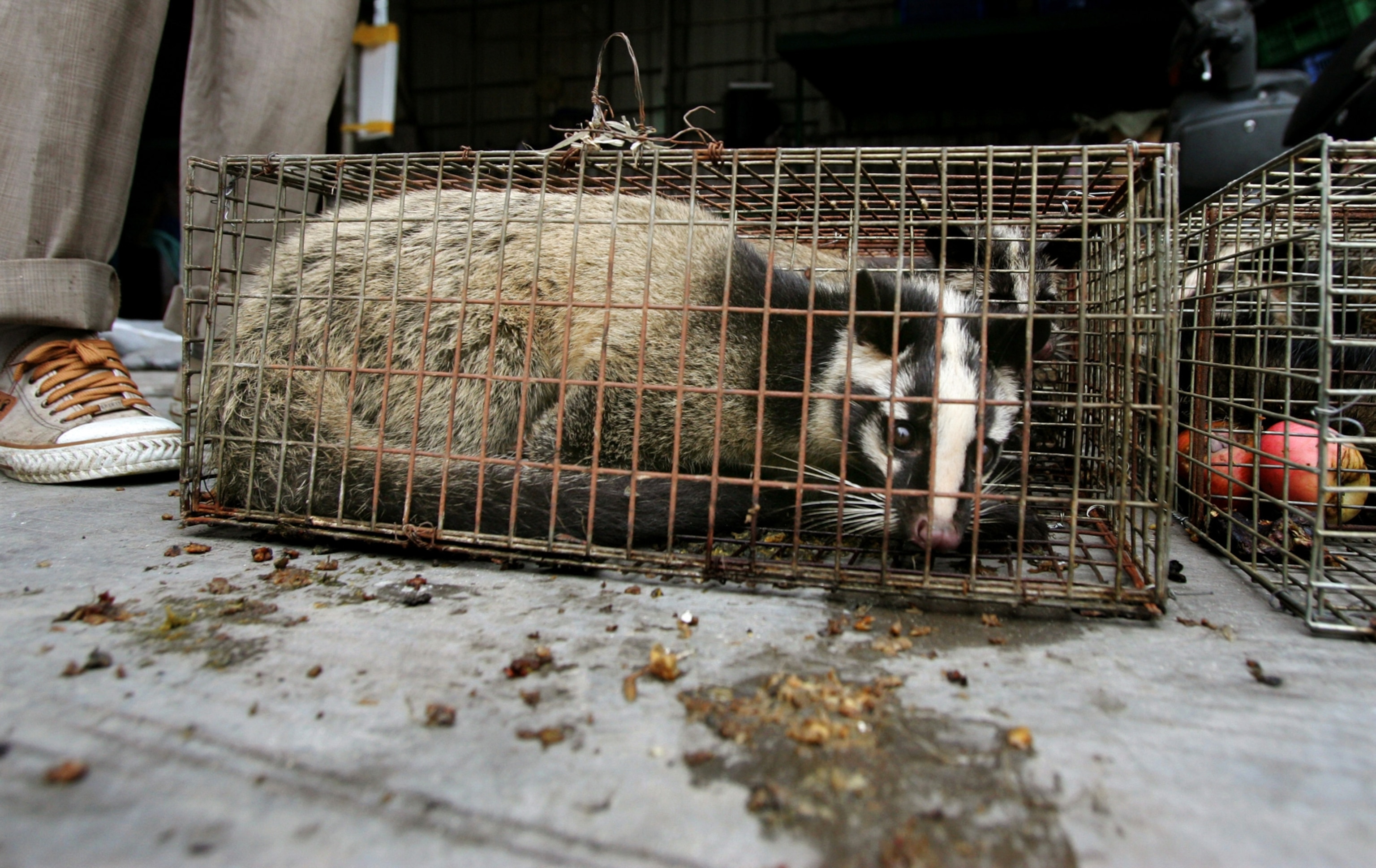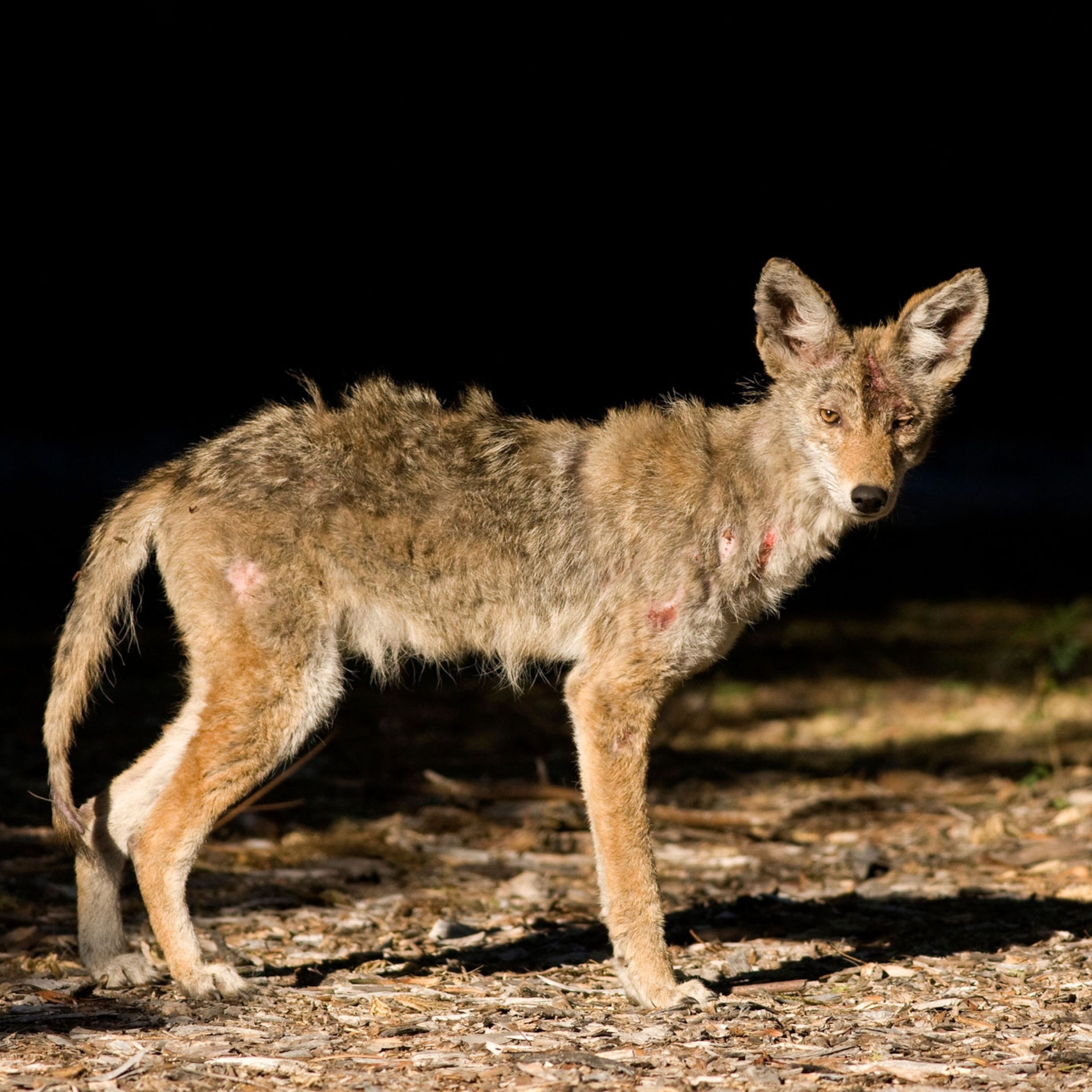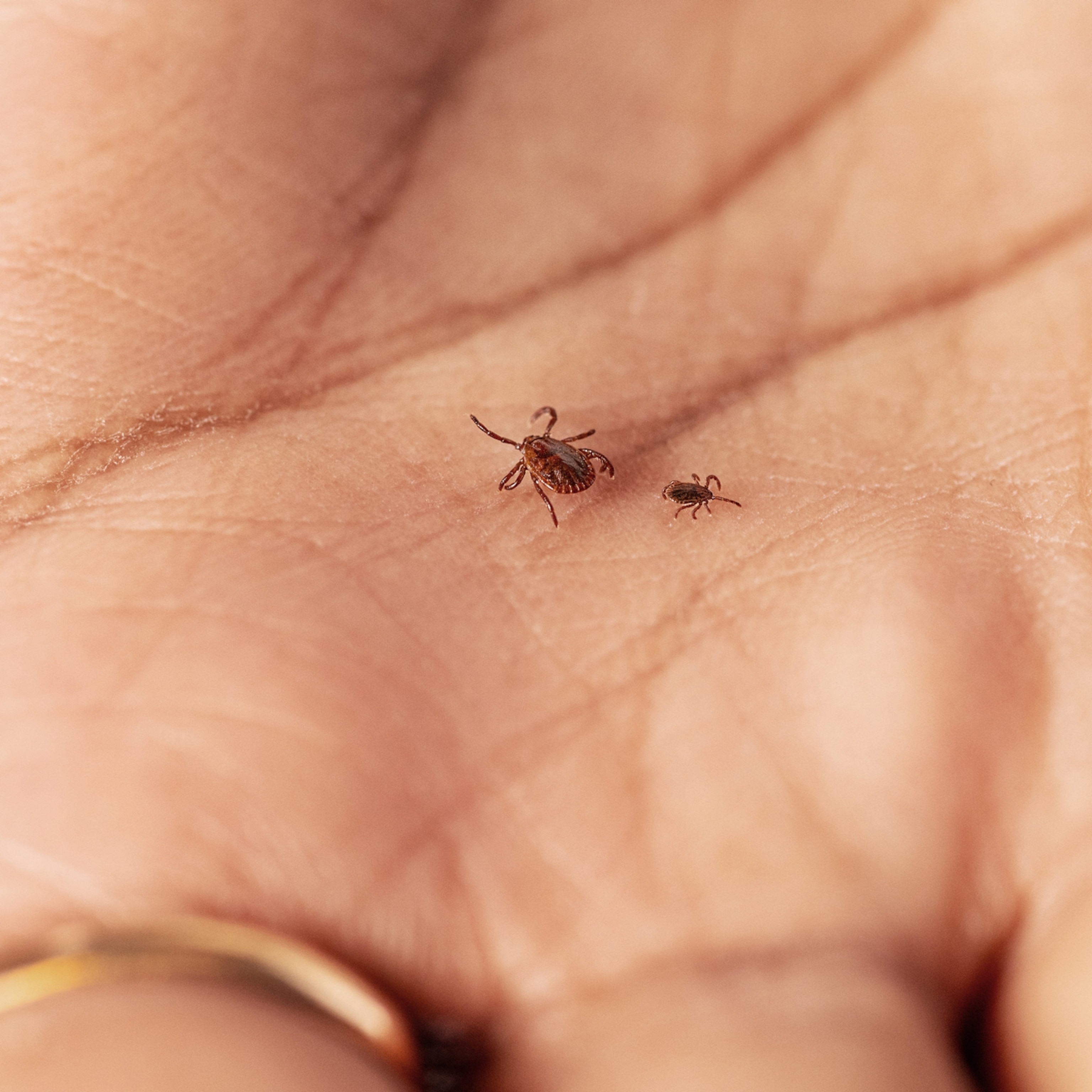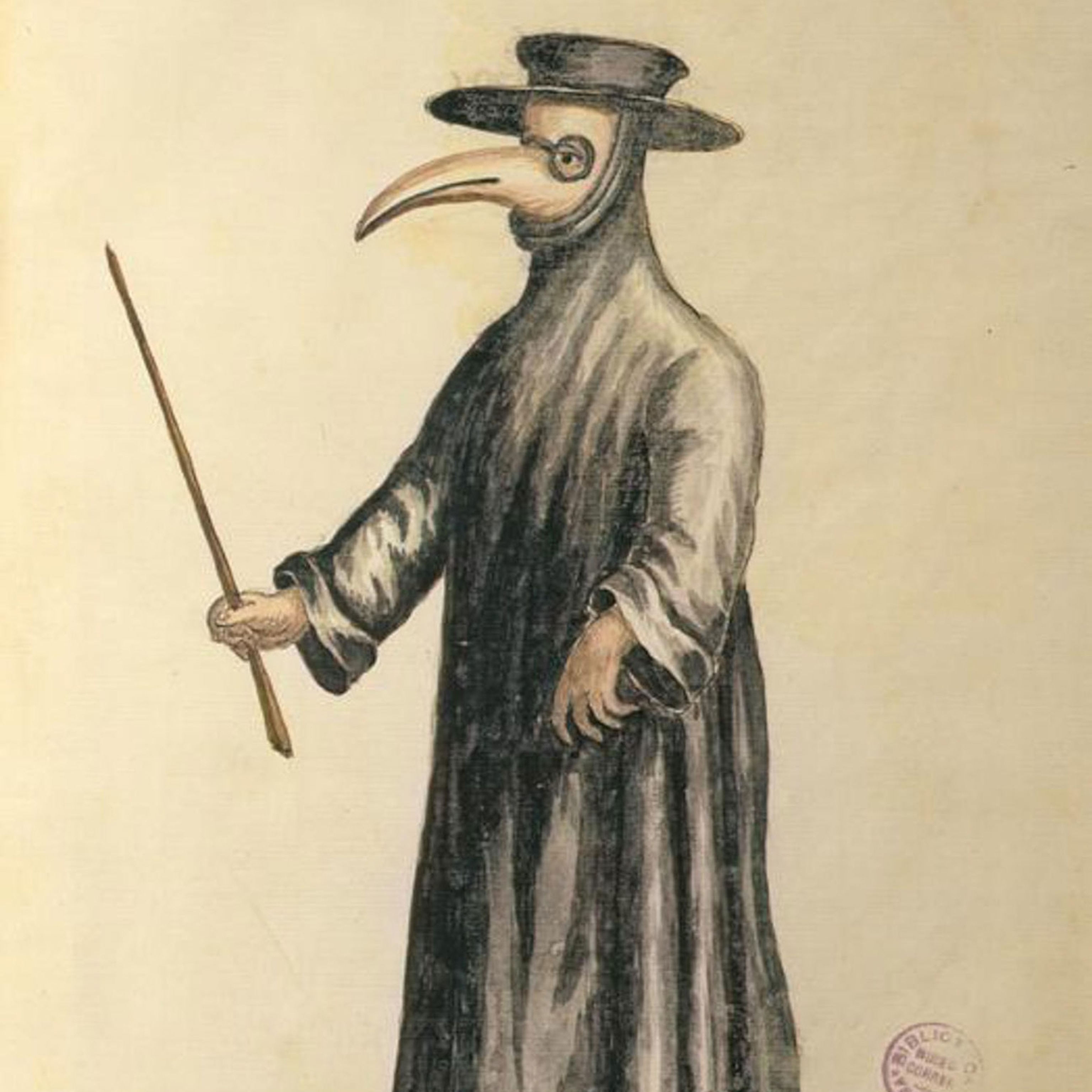
China’s exotic farms may be a missing link behind the pandemic’s leap to people
Farms supplying live civets, snakes, and bamboo rats may be where the virus jumped between species.
The civet farm was a converted pigsty, Peter Li says, describing a pre-pandemic visit to one of China’s then numerous small businesses specializing in breeding wild animals for meat. About 10 civets, wild animals with long, furry tails and face markings like a raccoon’s, lived penned together for eight to 12 months before being sold, says Li, the China policy specialist at Humane Society International and a professor of East Asian politics at the University of Houston-Downtown. With wild animals housed closely together and often in unsanitary conditions, he says, the potential for disease spread is great.
Eventually, high-end restaurateurs likely used some of the civets—considered a delicacy by some in China—as an ingredient in a pricey soup that also includes snake meat.
Before the pandemic, such farms kept China’s wildlife markets stocked with live animals—civets, bamboo rats, crocodiles, porcupines, and snakes, among others—primarily for sale to restaurants. The small farms, promoted by government officials as a way to reduce poverty in rural areas with few other job opportunities, numbered in the thousands and employed millions of people. But by the end of 2020, the government said it had shuttered all these farms as part of its response to the novel coronavirus.
Now, a World Health Organization (WHO) team is considering if wildlife farms may be a missing link that helped the coronavirus jump from its probable host animals—bats—to humans at Wuhan's Huanan Seafood Wholesale Market, a site connected to a cluster of the earliest human infections. (The team is also investigating possible links to another market in Wuhan that was tied to an early patient with no connection to Huanan.)
Peter Daszak, a British disease ecologist at the U.S.-based EcoHealth Alliance and member of the WHO delegation that traveled to China to investigate the origins of the pandemic in January 2021, told NPR last week that the WHO team found new evidence indicating that wildlife farms in southern China had been supplying animals to Huanan market, bolstering the theory that the farms may have helped spark the pandemic.
The WHO team has not yet provided details of their evidence or proof of infected animals at the farms or Huanan market. The organization declined to comment ahead of a report that will detail their findings, expected in the coming weeks, and delegation members did not respond to requests for comment.
Given that more than a year passed between late 2019, when the disease was linked to the market, and December 2020, when China says it shut down all its food-supplying wildlife farms, acquiring such evidence may prove impossible. Still, filling in gaps about how the virus may have leaped to humans is essential for understanding the COVID-19 pandemic and combating future zoonotic diseases.
Yunnan, the southern Chinese province where many of the now-shuttered wildlife farms are located, is also where virologists found a bat virus almost identical to the coronavirus circulating in humans. Some wildlife farms sold animals that can be infected with other coronaviruses, including civets, so scientists suspect that these species may also be susceptible to SARS-CoV-2, the virus that causes COVID-19.
“Potentially, some of these animals were infected at those farms and then brought the virus into the market,” Peter Ben Embarek, the Danish food safety scientist heading WHO’s delegation, told Science in February, after he and the WHO team returned from China, adding that more testing was needed.

Many wildlife farms abutted wilderness areas, so captive animals easily could have become infected by the feces of nearby infected bats. Moreover, Li says, some farms’ supposed breeding operations provided cover for the capture and sale of wild animals that were sold as farm-bred animals.
Once the virus was incubating in a captive animal—whether that animal came from the wild or was bred on the farm—the pathogen could then have hopped from animal to animal, mutating in the process. By the time the animal arrived at Huanan or other markets in Wuhan, the virus could have evolved to the point where it could take hold in yet another species: us.
Enduring risk from captive wildlife
In response to the outbreak, China’s legislature banned the sale and consumption of wild animals for food in February 2020, but it allowed farmers to continue raising wildlife for other purposes, such as fur and traditional Chinese medicine.
That means the risk of disease spreading from captive wild animals wasn’t eliminated, says Debbie Banks at the London-based Environmental Investigation Agency, who leads research on China’s more than 200 estimated tiger farms.
“The spillover risk is still there, irrespective of what the end use is,” Banks says. Fur farming may be of particular concern because mink are vulnerable to the virus and capable of transmitting it to humans. It’s unknown if China’s mink farms have had coronavirus outbreaks like the hundreds of farms in Europe and the United States, but China’s mink industry is large, producing more than 11 million pelts in 2019. (Learn more: What the mink COVID-19 outbreaks have taught us.)
Wildlife farms are a plausible spillover source, but he’d be “very surprised” if there’s strong evidence of it, says virus hunter W. Ian Lipkin, the director of Columbia University’s Center for Infection and Immunity, who was working in China in January 2020.
The spillover risk is still there, irrespective of what the end use is.
Debbie Banks, Environmental Investigation Agency
Lipkin says he’s not aware of testing on farms that would prove they helped SARS-CoV-2 jump from animal to human. And, he adds, even if the virus were to be found on a farm now, it would be unclear if the site played a key role in the early outbreak or animals there had just been recently infected.
Even testing frozen carcasses from Huanan market in Wuhan didn’t reveal detectable levels of the virus, making it hard to nail down a definitive link among farms, the market, and the outbreak, Lipkin says.
WHO noted last year that of the 336 samples collected from frozen animals at Huanan market, none tested positive for the coronavirus. The virus was found in some samples taken from other places at the market, including drains and sewers, but those sources don’t indicate whether the virus may have been in animals, humans, or both, Lipkin says.
But if evidence comes to light suggesting a wildlife farm connected to the Huanan market sold animals infected with the coronavirus, Lipkin says, that would be “a blockbuster.”
Wildlife Watch is an investigative reporting project between National Geographic Society and National Geographic Partners focusing on wildlife crime and exploitation. Read more Wildlife Watch stories here, and learn more about National Geographic Society’s nonprofit mission at nationalgeographic.org. Send tips, feedback, and story ideas to NGP.WildlifeWatch@natgeo.com.








